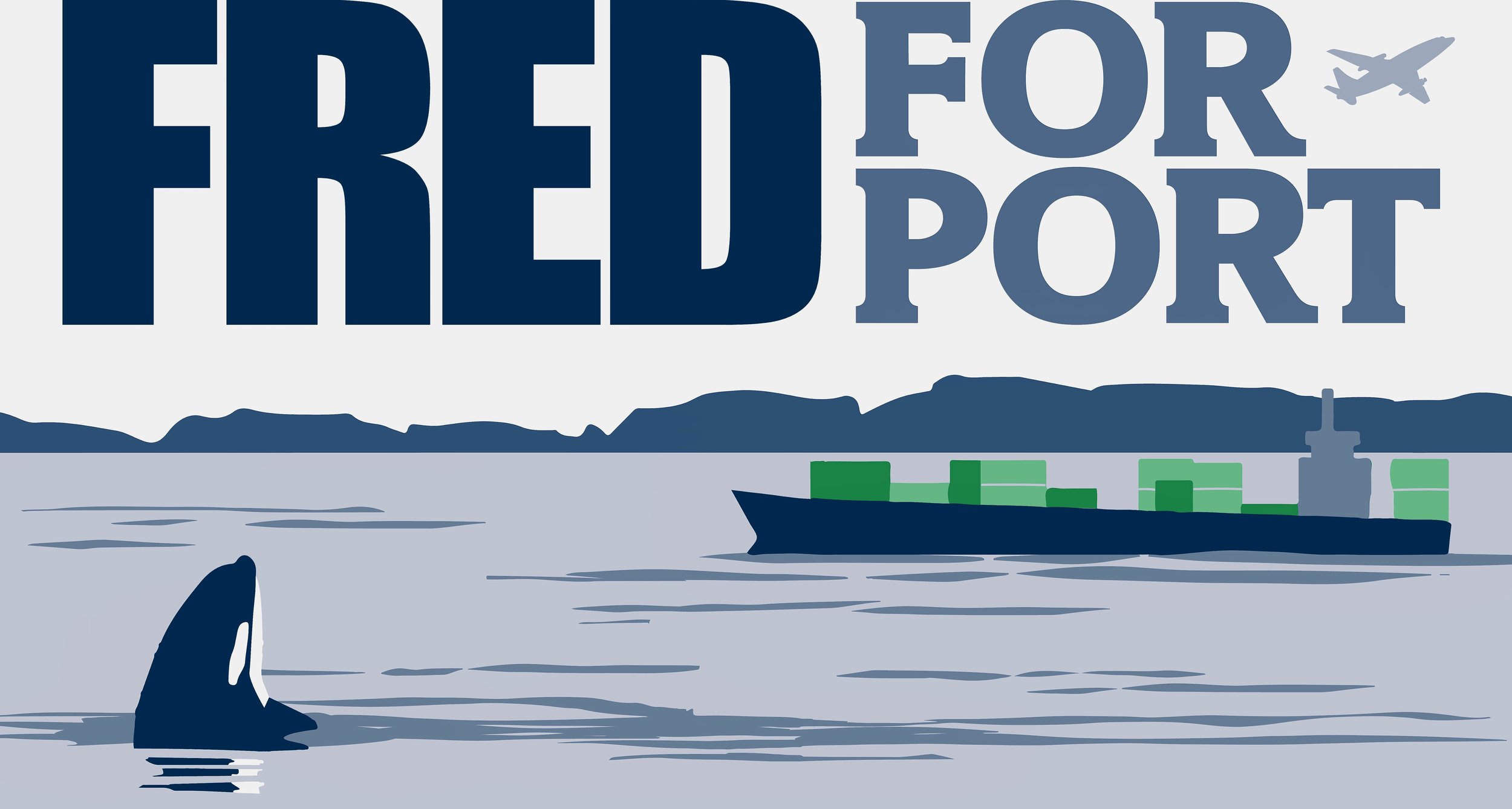© Fred Felleman
Accomplishments
Cultural Sea Change:
Commissioner Felleman has been engaged in the operations of the Port and Commission since the first cruise ship tied up at Pier 66 in 2000. Elected in 2015, Commissioner Felleman’s first term in office was focused on making foundational changes in how the Port relates to the community and the planet which made subsequent enduring accomplishments possible.
The longest serving member on the Commission, his leadership at the Port over the past seven years has helped transform this vital government institution from being run primarily as a business into one that strives to do well so that it can do public good. He has also served as a managing member of the NW Seaport Alliance, the joint operating agreement with the Port of Tacoma, since it was created in 2016.
As a member of the selection committee in 2017, Commissioner Felleman played a central role in the firing of the previous CEO and hiring of Executive Steve Metruck. He also continues to lead efforts to expand the capacity of the Commission office thereby enabling the elected Commissioners to develop policies more responsive to their constituents.
During his 1st month in office he founded the Energy and Sustainability Committee and supported the creation of the Port’s Center for Environmental Excellence with an elevated focus on climate change and environmental justice which led to the creation of the Office of Equity Diversity and Inclusion.
With these structural and cultural changes in place, Commissioner Felleman was able to begin to implement his vision for this public port. In so doing he has also brought more public appreciation for its operations which has drawn a more diverse pool of people interested in serving on the Commission and has resulted in a more accountable elected body.
Commissioner Felleman currently serves on the Port’s Industrial Lands Committee, the Art Committee as well as the Energy, Climate and Sustainability Committee. He is a Port tribal liaison and represents the Port on the Puget Sound Regional Council’s Growth Management Board, the Puget Sound Partnership’s Ecosystem Coordination Board and the Highline Forum. He serves on the Visit Seattle Board and was recently appointed to the US Department of Commerce’s Travel and Tourism Advisory Board.
Commerce, Community, and Climate
Commerce:
• With the Northwest Seaport Alliance, completed construction of Phase I of Terminal 5 with the largest cranes on the West Coast and shore power to reduce ship emissions and noise as well as on dock rail to reduce truck traffic.
• Opened a new and expanded International Arrivals Facility (IAF) and completed renovation of North Satellite at Seatac Airport (SEA).
• Improved Fishermen’s Terminal facilities including the beginning of the transformation of the vacant Ship Supply Building, the port’s old asset, into a Maritime Innovation Center with the highest level of green building design
• Homeported the most cruise sailings in Port history with 293 vessels and 1.3 million revenue passengers while developing a green corridor designed to accelerate the reduction of the carbon footprint of the Alaska cruise operations.
• Protected industrial lands from incompatible developments to support ongoing Port operations.
• Hosted the first Responsible Outdoor Travel Summit to identify ways in which the Port can help promote travelers to experience the natural and cultural diversity of Washington state while recognizing the importance of respecting the needs of the people and wildlife that call those places home.
Community:
• Initiated capacity building efforts of the Port Community Action Team (PCAT) along the Duwamish River.
• Awarded $200,000 in Tourism Marketing Support Funds to 25 grant applicants with an increased focus on nature and culturally based programming as part of $1.8 million investment in support of statewide tourism programs.
• Initiated the hiring of a tribal liaison and creation of a memorandum of understanding with the Suquamish and Muckleshoot tribes as well as the development of a tribal internship program.
• Supported the transformation of Terminal 117 into the Duwamish River People’s Park including the Port’s largest habitat restoration project along the Duwamish River and budgeted $17.7 million for other environmental stewardship programs.
• Budgeted $19 million for 18 community program organizations to mitigate noise, promote a healthy environment, and implement sustainable practices as well as awarding 12 South King County Organizations $250,000 in funding to stimulate economic recovery.
• Invested $40 million in sound insulation programs for more than 215 apartment complexes within the airport’s noise remedy boundary.
Climate:
• Adopted the NW Ports Clean Air Strategy which forms creates a roadmap for decarbonizing Port operations
• Achieved Greenhouse gas reduction goals 10 years early with major investment in renewable natural gas and demonstrated a 46 percent reduction in carbon emissions for facilities owned and controlled by the Port
• Initiated use of electric shuttles between the light rail station and terminal gates to encourage use of mass transit to the airport.
• Instituted a green building code for significant Port construction projects, including the installation of the first solar arrays on Port buildings.
• Successfully advocated for state and federal legislation that resulted in the largest investments in greenhouse gas reduction initiatives to in the nation (eg. Climate Commitment Act, Low Carbon Fuel Standard, Inflation Reduction Act and Infrastructure Investment and Jobs Act).








